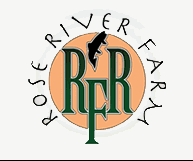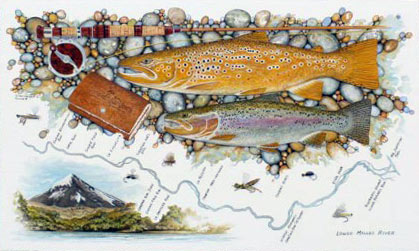Coho Salmon, January 2012, Fish of the Month!
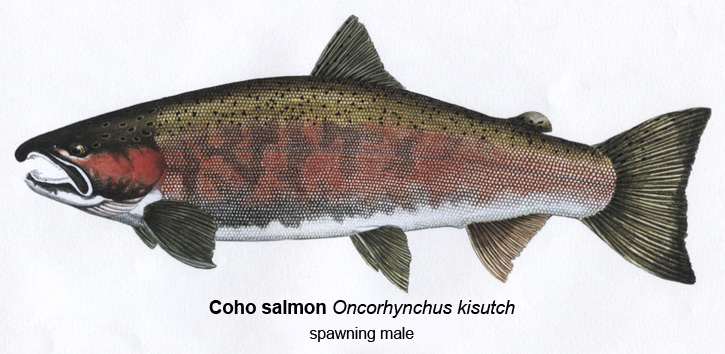
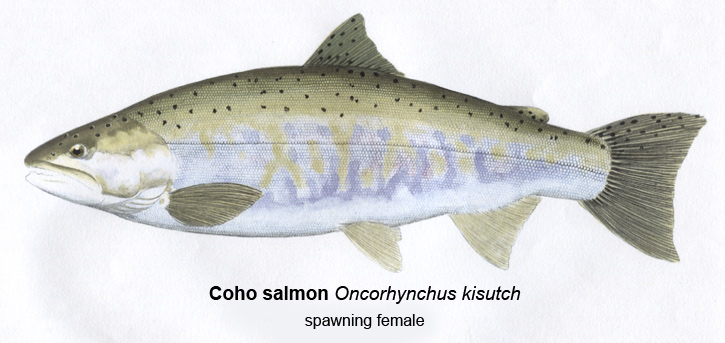
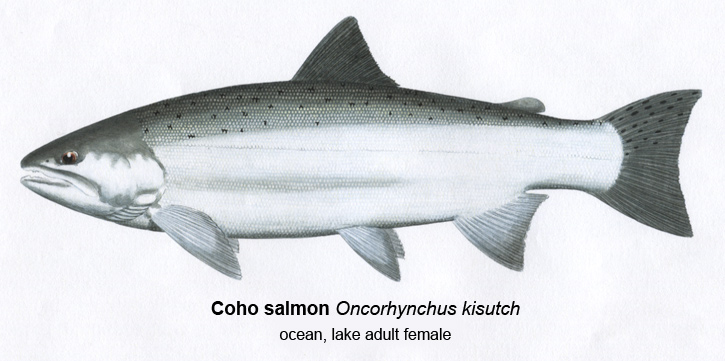 Coho Salmon
Coho Salmon
Oncorhynchus kisutch
Local Names:
Coho, Silver salmon, Blueback, Cohoe, Hooknose, White salmon
Average Size:
24 to 36 inches
6 to 10 pounds
Distinguishing Field Marks:
Color and color pattern are reliable distinguishing field marks for this species. (See the illustration.)
-
Cohos have white or gray gums, in contrast to Chinooks, which have black gums.
-
In both sexes, the snout overhangs the tip of the lower jaw. In spawning males, this is very pronounced.
-
Irregularly-shaped (sometimes X-shaped) spots are found on the back and only the upper lobe of the tail fin.
-
The caudal peduncle is thick, making it difficult to lift a Coho salmon by the base of its tail.
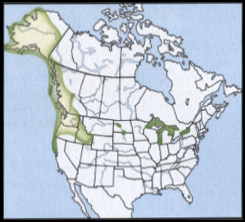
-
There are 12 to 17 rays in the anal fin.
-
The tail fin is slightly forked.
North American Range:
Map to the right shows approximate range in North America.
Diet:
Coho fry feed on small planktonic organisms that drift to them on the stream's current. As parr, they become more active and feed mainly on immature aquatic insects and a broad range of other invertebrates, as available. They frequently shelter near sunken logs and weed-beds where they hide in waiting to ambush passing prey.
In salt water, adult Coho salmon feed mainly on small fish, shrimp, and squid. In the Great Lakes, the Coho's main food source, as is the case for Chniooks as well, is Alewife.
Fly Fishing for Coho Salmon:
Well folks, we’re finally there. We’ve now entered the world of prime game fish species. The Coho salmon is a pretty good place to start that part of our fish education.
Like ALL our Pacific salmons, the Coho has seen a significant decline in its Pacific Rim numbers over the course of the past 25 years. In the Great Lakes, by contrast, they seem to be maintaining their population. An interesting note in this regard is that the current world record Coho salmon was caught in Lake Ontario. Throughout the Great Lakes, though, the ever-important predator/prey relationship is in constant transition. This is exacerbated, especially in Lake Ontario, by an on-going parade of invasive species brought mainly from the Caspian Sea watershed in the ballast tanks of international cargo ships. We who fish for Great Lakes trout and salmon can only hope that what appears to be the inevitable inflow of Asian Silver and Big-Head carp does not rise to the biologically cataclysmic levels that have been predicted…. Only time will tell in that story…..
On the U.S and Canadian west coast, Coho salmon are among those species which, for a variety of reasons, are in serious decline. For the angler, this decline means possible adjustments in outing plans and the need to pay close attention to local, state, and provincial regulations.
Typical when approaching any anadromous species, timing is everything. West coast salt water fly trolling and fly casting are traditional methods for taking these salmon before they enter their natal rivers on their fall spawning runs. At this time, they are at their prime level of fitness and will be strong, acrobatic fighters when hooked. Cohos that have entered their spawning streams only slightly loose their salt-water vigor and remain willing to aggressively take flies, lures, or baits drifted to them at the speed of the current.
Check local conditions to determine when each river hosts its run of Coho salmon. As a rule of thumb, Cohos tend to run just slightly later than Chinooks. October and November can be assumed to be prime Coho river fishing times.
Equipment? 9 to 10 1/2 foot fly rods that will comfortably handle 7 to 8 weight lines are recommended. Reels should have a backing capacity of 150 to 200 yards under the line. Coho salmon flies cover a broad range of patterns. Checking with local tackle shops where you plan to fish will make your selecting the appropriate flies easier.
Not the biggest of our Pacific salmons, Cohos can well be described as the most game. They are capable of doing all of what we fly-rodders would hope a fish would do. They often strike aggressively, make long powerful runs, and frequently make spectacular arial displays, especially when caught at the beginning of their spawning runs.


